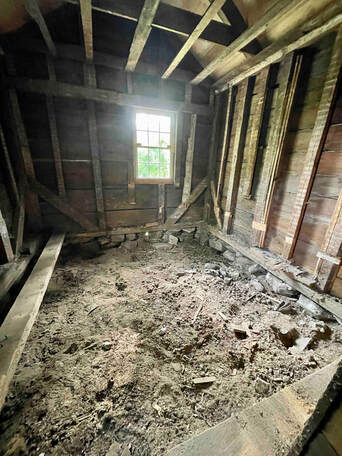 Progress inside the Tilden is well underway as we begin to frame out the new accessible bathroom and a small catering kitchen. And, during the removal of the floor in the kitchen we discovered ... Shoes!! Several pairs of boots and shoes as well as bottles, china and other household items are in the dirt beneath the floor. There is a history of hiding shoes in crawl spaces, chimney gaps, attics and beneath the floor of entrances to houses. European settlers believed that hiding shoes near entry or exit spots would ward off evil spirits and prevent them from entering the house. You can read more about another find in Annapolis, Maryland that closely resembles what we are discovering in Canton. And, a noted archeologist in Boston also noted that the Tilden shoes could be the remnants of a trash midden or privy. We just do not know the answer just yet. The work we are about to do will begin to answer these questions. The area that the work will be done in dates to the mid 1800's - so it is likely that what we are excavating will date to that period and earlier as we dig deeper. 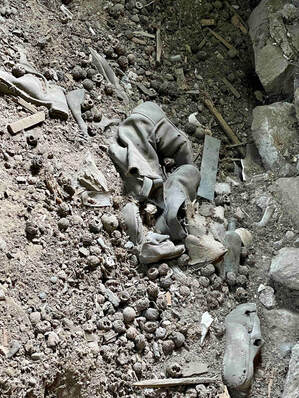 The project team is now undertaking a fabulous new project within the overall preservation of the house. As part of the restoration work, the team began the rehabilitation of the circa (ca.) 1850 ell addition off the Tilden House’s southwest corner. The ell was most recently used as a kitchen. When the existing flooring was removed to prepare for the upgrades, three sets of leather shoes were found on the earth surface of the crawlspace. The Canton Historical Society is working with The Public Archaeology Laboratory, Inc. (PAL) to document these cultural materials and conduct an archaeological site examination of the area below the ell prior to the start of ground disturbing activities. The goal of the archaeological site examination will be to locate and document any archaeological deposits that are present within the project impact area. The site examination will be limited to the approximately 8-x-8 foot (ft) interior footprint of the ell where ground disturbing activities may occur. All work is conducted under a State Archaeologist’s Permit issued by the MHC. We are excited to share this project with the public and look forward to what we discover. Indeed, Indiana Jones would be pleased.
4 Comments
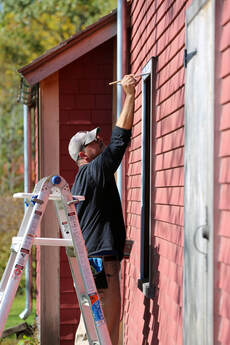 At the Annual Meeting of the Canton Historical Society, Paul Mitcheroney, president of the Society announced two new major funding sources for the David and Abigail Tilden preservation project. The Society has received the largest single private donation to date. A $25,000 gift was received as a tribute to the Alexander Family that lived at the historic house during most of the 20th century. Donated by Charles Alexander Jr. and Daniel Alexander, the donation has been made in the memory of their parents, Charlie and Sylvia Alexander who lived in the Tilden House when it was part of the Draper Estate through much of the 1900’s. “We wanted to commemorate the fact that my parents were part of Canton’s rich history, and forever tied to the preservation of the family home,” said Charles “Chuck” Alexander. The donation will be used as part of the Phase II preservation efforts and will be earmarked for interpretation special projects. Chuck Alexander, along with more than two-dozen family members visited the Tilden House in September as part of a long planned family reunion. The progress at the house was a solid testament to the commitment by the Canton Historical Society for the preservation of this first-period home. This same week, the Historical Society was made aware of a $25,000 earmark in the FY22 State Budget administered through the Massachusetts Office of Travel and Tourism. State Representative William Galvin requested the funding as a commitment to local and regional tourism. The earmark will be used to support the ongoing preservation carpentry, window installation and building systems at this project. “Representative Galvin has been a stalwart supporter of this project,” said George Comeau, curator and project director. “Bill Galvin has been responsible for supporting more than $125,000.00 for this project and has a keen commitment to historic preservation.” To date, the project has received more than $175,000 in state funds that have leveraged the Community Preservation Grants awarded in two phases at past Annual Town Meetings. In addition, the project has been awarded private grants and built on donations from individuals that have totaled more than $70,000 over the course of the last several years. Phase II of the project includes an accessible bathroom, interior preservation, landscaping, exhibit design and the installation of all major systems. Handcrafted windows made by the students at the North Bennett Street School are being installed now through November. The remaining windows will be made over the winter and installed in the spring. The long-term care and management of the Tilden House is made possible by a lease by the Town of Canton the Canton Historical Society. The house will be used as a study house and be the location for special programs and historic events. Completion of the restoration project is slated for 2025. 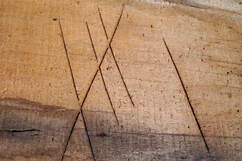 Scribe marks that appear on many boards throughout the house. Scribe marks that appear on many boards throughout the house. The Tilden House has been thoroughly explored over the last several years. In order to prepare for the preservation, several walls were opened to gauge the extent of work needed to re-work the structure. Along the way there have been some wonderful surprises. Early on in the exploration of the house, inside a small closet - and hidden from view we found that someone had written in chalk the date 5 July 1791. Whose hand scrawled the date, and the significance is yet unknown, but as in all mysteries it's nice to wonder about this newly discovered moment in the house's history. There are other new discoveries that reinforced older theories about the house. The windows are one example. In an effort to decide what kind of window to install as part of this project, we needed an accurate count and style. There is only one window that exists that can be considered "old." And, we have four partial windows - mostly frames and not the sashes that date to the late 18th to mid 19th century. In opening and rebuilding the walls of the structure we found several instances of rising braces. Rising and falling braces are classic timber frame elements of a joint that fortifies the frame by resisting movement in a certain direction. The braces attach to the corner posts, and when evidence is found, we can tell that they would have joined the upper plate in a certain place, thus there would not have been a window cut through the brace. In at least four cases, we are eliminating modern window openings in order to give the house a chance to be interpreted more accurately to its 18th and early 19th century heritage. But, perhaps the most charming discovery was that of the clay marbles. When the team was removing the ceiling on the first floor of the parlor. As the plaster ceiling was removed, little clay marbles began raining down to the floor. What was most perplexing was the fact that they were all found within a single sets of floor joists. Upon closer examination we found a small hall in the second floor bedroom floorboards. Mystery solved, a small child sat in that bedroom shooting marbles across the floor - aiming for a quarter-sized hole - thus dropping the marbles out of sight for decades. The best part of discovery is the conjecture and theories that are developed surrounding the findings. On many of the sheathing boards we have found the same scribed mark etched throughout the house. It is a large X III with a hash mark at times. The fact that we are finding it all over the house, on a house that must have been re-sheathed at some point leads us to believe that we may have found marks from the local water-powered saw mill that cut the boards. We have even found them on the beams in the basement. These may have been used to tally and pay for materials, and may have some significance if we ever discover them in another local house near the same period. The boards are rough and show evidence that the source was a water powered sawmill. In all cases, the marks are roughly consistent throughout. And, in a few places we see a red crayon X nearby that may indicate a tally - as if to say "this board has been paid for." As we move closer to the completion of Phase I, the structure is strong again. We have begun the process of choosing a stain for the building. Yes, it will indeed be Tilden Red. And, we believe we have the means for a wooden roof - which will be a fantastic element that harkens to the white cedar originally on the house and likely sourced from the Ponkapoag natives who cut and sold cedar shingles from the great cedar swamp. Last week we received a generous donation from a friend of the project that helps us sustain the work and further validates the project. Stay tuned for more great discoveries as we begin to button up the house for the approaching season. Perhaps we will shoot some marbles. 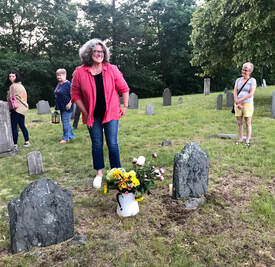 Karen Tilden at the graves of her ancestors. Karen Tilden at the graves of her ancestors. David Tilden died on July 3, 1756 and was buried in the Canton Corner Cemetery. This past week, several of us gathered at the gate to the cemetery to walk in unison to his resting spot. As the sun set, our lanterns cast long shadows across the grassy path. Arriving at his grave, we gave thanks to both David and Abigail Tilden. Buried side by side and three years apart, the slate head and foot stones so delicately carved have been well preserved. We lay flowers and in tribute we talked about how wonderful it is to share the history of the town in such a meaningful way. What made this impromptu ceremony so wonderful was the presence of Karen Tilden, the 7th great granddaughter of David and Abigail. There has always been a strong spirt among the people connected to this house. Having Karen with us is proof that the lineage in America is a vital part of the story we are sharing. Karen Tilden pledged her support and has been following the project for several years. It was so amazing to have a direct descendant with us at the graves. That same evening, we adjourned to the Tilden House and had lemonade and molasses cookies. Everyone got a chance to walk around the house and marvel at the work being done to preserve this place. Things are moving faster these days. Just about the entire structure has been fortified with new oak beams. Pine sheathing is being stitched into the walls in advance of the clapboard and shingles. The pine is at a minimum 18" wide, and it's wonderful to see the new wide boards begin to close up the walls. The place smells fresh, newly sawn wood has a scent that hangs in the summer air around the entire site. People passing by now applaud the vision to save this building and can see in a tangible way the beauty of the form of the timber frame construction. Finally, the carpenters are addressing the most difficult part of the project, the rear lean-to addition. The lean-to was probably connected to the north elevation in the late 18th or early 19th c.. By its crudely chamfered structural elements which recall 17th c. building techniques, it appears to predate the main house and may even be the house which records tell us was on the property at the time Tilden leased the land - the house of Jabez Searle. We think now that its height and width appear to have been cut down in size. This is the part of the building that nearly derailed the project two years ago. At that time it appeared that we may have had to demolish this section and rebuild a replica in place of the original. In order to save this part of the structure, the structural engineer devised a series of "SIP" (structural insulated panels) walls that would encase the original walls and literally entomb the artifacts of the walls. No one really liked the idea of SIP walls and while costly, they wold prove to be a cumbersome part of the project. Gerry O'Doherty, our preservation carpenter left that work for last. After much to-and-fro, the decision was made to rebuild and reframe. The walls, which show three layers of plaster and wallpaper are very important and will be sandwiched carefully and held to create an interior exhibit that showcases the techniques used to create lathe interiors. Once this section is addressed structurally, the remaining elements are the windows and doors, siding, roof and some chimney work. Things are starting to really take shape. Phase I has been blessed by glorious weather, talented craftsmen and the ever-present spirit of David Tilden. 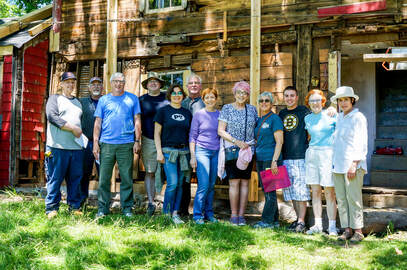 Today was an emotional day for me at the Tilden House. I have to admit that as our guests left a friend caught me crying. There is no doubt it was very delightful. After all, it had been more than twenty years since the public had been in the house. It was the realization that finally we can safely take people through the house and showcase the history, workmanship and heritage of this first-period home. The two-hour workshop was a test. We wanted to know whether the story that we had been telling for many years would have meaning and spirit within the space. Because the house was “standing sawdust” for the last several years, it was always precarious whenever we invited people inside. The windows had been boarded up, the floor sagged, and animals had largely come to occupy large sections of the basement and attic. What we can say now, and on no uncertain terms is that indeed the stories and discussions that have led to the preservation project resonate within the authenticity of the house. It’s a simple house built in a simple time for families that came to live in Dorchester Village – or Stoughton and then Canton. We spent time talking about the process of preservation and what it takes to deconstruct a wood frame structure in order to put it back together. At one point a dozen people stood in the front parlor – to do so merely six months ago would have been impossible. We’ve always been very forthcoming with the fact that the work we are doing is in phases. And phase one is all about structural integrity. In order for twelve people to stand in the parlor, the floor strength had to be brought to one-hundred pounds per square foot. The new floor loads in the Tilden are designed to meet the demands of a modern museum. Your house has a floor load of less than half what we are providing for in the Tilden. And so, it is no surprise that there was great joy seeing so many people in a place that was once off limits to more than two or three people at best. The new challenge that is arising is the need to understand how to reframe the house and the windows. Since the plates, girts, beams and posts are all repaired or replaced, and the sheathing is about to go back on, there is a need to figure out the rough opening and quantity of windows. Sadly, we are still trying to raise money to actually place new windows into the project. The balance is being made with the need to make sure there is a wooden roof as well. Is it possible to want to much? Probably so. But, that is what the creative side of preservation is. Deciding how best to allocate the funds in a way that ensures success and safety. Last week our historical architectural consultant spent an entire day studying the exposed building. This is where the window style is being chosen. It is also where we are making a choice as to which windows to eliminate. The house is not being restored to the time or Tilden or Alexander – rather we are moving to adjust the time of the house to the first third of the 19th century. Keeping all the elements that were there just before the Civil War. So, the house as a continuum will show several owners and several styles. Certainly, the first period (late 18th century) will be shown. But, some of the changes made in the late 19th and early 20th century as well as work in 1976 are being eliminated. Careful documentation is underway to preserve what is being changed. Through reading the building we are now more confident in the final look of the facades and lines of the house. And so, on a glorious summer day, we opened the Tilden for the first time. We shared so many stories and in a private moment I cried a tear of joy. It’s really hard to explain the joy and elation of this work. A five-minute trip to the Tilden turns into an hour or two whenever Jay or Gerry are working. Until now, it was only for me, so it is a new emotion to be able to share with others; the details, craftsmanship and history of such a remarkable place. Our architect, and dear friend Lynne Spencer remarked, “out of the ashes rose the Phoenix,” and the Tilden is just that – radiant and shimmering. Just like the Phoenix, the Tilden has lived for several hundred years, nearly died by bursting into flames, and now reborn to start a new life – long and rich and worthy of our heritage. 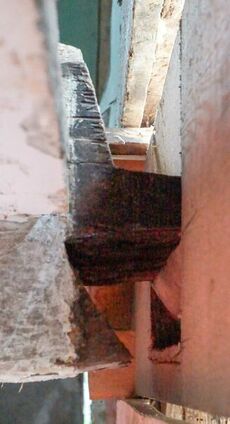 A tusk tenon at the end of the summer beam. A tusk tenon at the end of the summer beam. On the east facade of the Tilden House there has been a flurry of activity. Our preservation carpentry team has always felt that the work has to be visible to the public, and what better way to demonstrate the progress than to work on the wall that faces the street. As the scaffolding suggests, the work is focussed on the repair of the girt (horizontal timber joining wall posts between sill and plate) on the gable end of the building. And, the chestnut girt is surprisingly strong and needs minimal yet surgical repairs. At the very middle of the beam, the rotted section needed to be cut away, and a new oak section installed in its place. The work here demonstrates clearly the difference between preservation carpentry and modern adaptive reuse. The repair is made even more complex owing to the fact that within the building and centered on the repair, the girt has to connect and join the enormous summer beam inside the parlor ceiling. The summer beam is a critical component in the strength of the structure and carries a great load. This beam is the major floor timber spanning the large room, and joining it to the girt was a challenge. Once the rotted section was removed, a rare site was revealed. The joint that was at the end of the summer beam was quite unusual, and Bill Finch, our architectural historian identified it as a tusk tenon. Bill wrote from Maine, "this is a variant of a “tusk tenon” joint, the variant being the angle cut in the top of the lower part of the joint." What we saw onsite this week was magical. The workmanship of almost three centuries revealed. And, the challenge was to preserve the tenon - even though it would never be seen again once the repair was made. And so, the tusk tenon was carefully measured and then the negative space was cut into the new oak repair and slid into place. The original pins that held the summer beam into the girt will be placed back inside for a genuinely authentic and detailed repair. Gerry O'Doherty smiled as he told me a bit of grease helps move the tenon into the specially cut mortise. I can never tell if he is playing on my gullibility or if he is genuine in his teaching. Often times he tells me that he "can't give away all his secrets" as if I would ever embark on such a project again in my lifetime. In any case, the after using a sledgehammer as a persuader, the oak repair slid into place. The tusk tenon will never be seen again. And there is more. If you look at the repair in the last photo below, you will see that Gerry O'Doherty has two cuts one either end of the new repair. The cut on the left is quite complex (sloped half lap) and was done to preserve additional details in the vertical beams above and below. On the right, the joint is less complex (half lap) because the area surrounding the joint had little material, if any, to preserve in context. When people want an explanation of what this project at the Tilden is about, this is but one example of dozens where careful attention to materials and historic fabric are taken into account to dictate the means and methods of preservation. The joy of discovery lies in the academic research of answering so many mysteries about this house. There is some degree of conjecture in the process, but with so many experts to draw upon we have learned so much more about David Tilden and what kind of a man he was here in what was the wilds of Dorchester. There is a talented hand at work in the craft of building a timber frame house. And, what had been described once by our structural engineer as "standing sawdust" was standing as a result of the strength of the materials and workmanship in their assembly. When the snow loads in February 2015 caused the collapse of the modern ice skating rink in Ponkapoag, the Tilden House carried the loads admirably. Now we know why. The timbers of native chestnut, oak and fir have dense cores that despite the burrowing of the powder post beetle have withstood the test of time and still support the structure. The work we do today will extend the life of the Tilden for many more generations. That is the magic of this project! Preservation happens for the pure joy of preserving something and sharing the discovery with people who care and have a passion for history. The house is talking and we are listening. Watch a short movie showing the process of cutting the new repair and tightening the building.
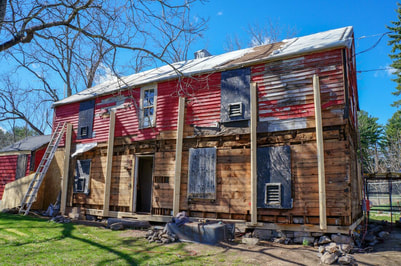 The facade is being temporarily braced for structural safety. The facade is being temporarily braced for structural safety. We are in the fourteenth week of the project, and work has moved out of the basement. The plan to work from the bottom up meant that much structural work on the house has gone unseen for the past three months. In the cold of winter, the preservation carpenters worked to use the snow to their advantage. Sliding oak beams and timbers weighing over 600 pounds on the snow allowed them to slip through precut holes in the foundation. Once deep inside the depths of the house, the beams were jacked into place and in some cases sistered to original materials to preserve the artifacts of the house. As the trees begin to bud out, and life returns to the Tilden Meadow, there are obvious signs that the work has progressed significantly. As you look at the facade of the Tilden, the clapboards have been stripped and it is easy to observe the skeleton of the timber frame. There are gorgeous hand hewn timbers, notches cut by David Tilden himself, and plenty of evidence of First-Period joinery. And, while there is joy in seeing what evidence has survived, there is also dismay at the extent of the ravages of time. The powder post beetle has had a feast, water and wind have worked their decay, and of course time has taken its toll. Work done in the 1970's was done using very modern framing techniques which pose new challenges today when deciding how best to treat these parts of the structure. Today, the work is obvious and direct. People who walk past the fence can see the changes. Structurally, the Tilden House gets stronger every day. And to do so means that it sometimes is even more precarious than it was prior to the work starting. It is the paradox of the project. To make strong there is risk. The walls are now exposed and temporary bracing is used inside and out to guard against the potential for gale force spring winds. Steel columns are installed inside along the summer beam to help support the interior while the exterior framing is being repaired. A series of jacks are used to gently lift and drop the entire building onto new oak sills. At the same time, a transit ensures that for the first time in perhaps a century, the building is now level again. In some cases the building has been off by more than five inches. As you look at the corners of the building where the corner posts attach to the girts (the key horizontal timber that connects the posts to the second floor) there is a gap of a a few inches. The corner posts and the girts have pulled apart with time. The pegs that held them together have been torn asunder and the house will need to be tightened. A plan is on the table to use steel chains and a winch attached to a block deep in the basement and literally tighten the entire house to bring it back into plumb. It is a plan of ingenuity and will allow the house to have a straight roofline and impressive strength once again. The men working on the house today share the same passion as David Tilden. They are men that understand what can be done with their hands and minds against difficult odds. Working with minimal tools and raw materials, the craftsmen are placing their lasting workmanship on a house that will have integrity for however long it survives. Spring has come to the Tilden, and in this second season we are seeing rebirth and the blooming of the project. It is indeed a season of delight. 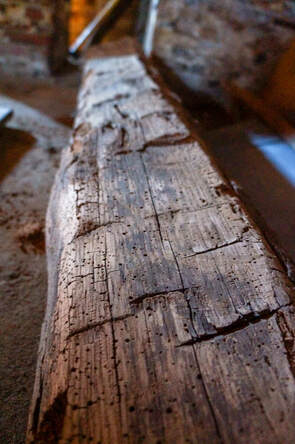 Evidence of the marks of a broad axe. Evidence of the marks of a broad axe. Jim Roache, a fellow curator from the Canton Historical Society, stopped by today. We walked around the building together and near the front door we saw something very special. At the ground, from out of the muddy grass we saw a spring crocus. Purple and yellow with tender green leaves, the crocus greeted us with the joy of another Spring at the Tilden House. That's the thing about what we are now doing. Small things start to become illustrative of a larger story. We now see nails protruding from the beams in what was the kitchen and instinctively we know that at one time, fine herbs once hung from that same spot. We are looking at so many new things everyday. The remarkable thing about this project, is that in doing the work today, the preservation carpenters are using some of the same techniques that have been employed in timber frame construction for the past several centuries. As you walk through the project, the oak timbers are cut with painstaking precision. There is a quality in the craftsmanship that will speak through the ages. The visitor is hard-pressed to find modern materials at this site. Yes, there are a few power tools, but still the old ways are the best ways. The men working at the Tilden are craftsmen, and they take great pride in their work. Chisels and ice tongs liter the work zone, and even scraps and cribbing are employed when needed for a shim or temporary brace. The timbers that are being replaced also tell a story. The marks of the tools that fell the chestnut trees in the 18th century help us see the house in new ways. Gerry O'Doherty pulls out a large bean and shows the marks on the side, "this beam was shaped with a broad axe," he explains. O'Doherty has an instinct that is supported by more than three decades inside really old houses. A natural teacher, O'Doherty shows me the marks, and explains how the tree was felled, shaped, notched and formed to become the beam at our feet. The, O'Doherty goes on to describe the tool itself. Waxing over the description of a goose-neck handle and finely sharpened edge, it is as if David Tilden is describing his work back in 1725. It's a joy to learn so much from a single block of wood. It's been a good season for the preservation crew. The weather has been cooperative, and snow stayed at bay for the most part. Inside the basement, where the bulk of the work has progressed, has stayed fairly tight and has not presented nearly any surprises. From an engineering standpoint, the new oak timbers are impressive. On a recent visit we found that the structural engineer has added three new footings below the oldest section of the house. The new support frame, in many cases, is being sistered alongside existing beams. Visitors to the Tilden in the future will be able to see the new work being done today alongside the preserved work that dates to the original builders of each phase of the house. Soon, the carpenters will be out of the basement, and as the weather gets warmer we will see increased activity outside the house. The transformation is slow and steady. We remain on budget and on a timeline that brings us into the mid-summer for the completion of this phase of work. Each and every time we visit, it is a joy to see and learn more about this place. 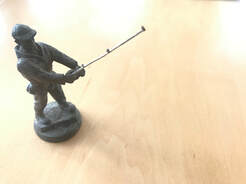 The trees were felled quite recently, and the white oak timbers are still green and soft. Harvested using sustainable forestry techniques, the enormous beams are now being hand-notched and slid into place in the basement of the Tilden. The snow has helped provide a ready-made skid as we move the beams weighing hundreds of pounds. Techniques we are using to preserve the house are essentially the same methods that David Tilden used to build his home almost three-hundred years ago. This past month, we have found some very special evidence of early first-period building workmanship. It is an exciting time to be a part of this project. In the oldest part of the house, built as early as 1707, we discovered unique interior panels that are splined together and show evidence of a simplistic decorative bead. And, in another section of the house we found two original windows that may date to the within a few years of the 1725 construction date. And, when opening up the basement floor to pour new footings, we surprisingly found the original footings that David Tilden placed when the house was originally built. Almost three-hundred years of engineering comes full circle in the basement of this historic site. And then there are the random discoveries that hint at the personalities of the people who once lived here. At the bottom of the basement stairs, a small artifact was discovered in the dirt floor. Certainly not old, but a clue that children played here in the early 20th century. A toy fisherman made of some heavy metal and in near perfect condition. Long lost, long forgotten, and now discovered. It's a wonderful found object. Over the next few weeks, as the timbers get replaced and the pulse grows stronger, we will bring back the historic building experts to help us understand and place into context the building now revealed. Also, we will begin to schedule tours for the public to come and see the project up close. We all share in the discovery and learning process. Each day we draw the building further away from extinction and into the relevancy of enhancing our place in history. The building speaks, and we are listening. 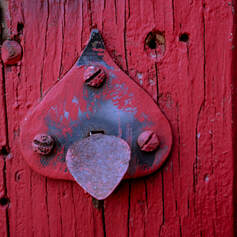 Ambling along the chain link construction fence I came upon a well known "townie" and his dog. Pleasantries were exchanged and then he looked at me quizzically and asked me "Why?" There was a litany of questions attached to the "why" - "why spend the money? Why save this wreck? Why not tear it down and build a new house at half the price?" and so on. I never have taken offense to the question, even at the core when it reflects my own personal beliefs behind historic preservation. The foundation of the answer lies quite simply in the reply "why not?" The Tilden House has great intrinsic value. The hand hewn oak and chestnut beams all date to the early 18th century and some perhaps date to the late 17th century. The hardwoods that grew in Dorchester Village and cut by the pioneers who made a life and survived at the edge of wilderness. Keep in mind, that this house, even in the worst of conditions has weathered over three-hundred New England winters. Countless snowstorms buried this homestead and it has survived. It is a survivor and continues to speak to us in new ways. There is a treasure trove of details that are now being seen for the very first time. The fabric, construction, and the hardware that were all created right here on this property. The Tilden House will attract people, young and old, who value history and culture. It will become a backdrop to a historic landscape and help people see the cultural complexity and aesthetics of Pequitside Farm. Touching the summer beams - the load bearing timber that carries the weight of building, and knowing that David & Abigail Tilden lived in harmony in this space, brings great comfort to the visitor. Many local preservationists and citizens have rallied in support of the Tilden for the past six decades. The heritage and the permanency of this building will become readily apparent over the next several months. Each day the house is drawn away from the brink of extinction. Why? because people care. They have cared to give their time, money, energy, votes and most of all passions. To have lost this treasure would have been unbearable. Imagine that valley on Pleasant Street without the iconic Tilden, and the answer becomes clear. The Tilden is continuity for our community, it is embedded in our memory of this place, it is one of the reasons that makes Canton (and Stoughton for that matter) unique and culturally significant. When completed, it will again become a beautiful place to visit and learn about architecture, first-period craftsmanship and help generations in the future understand our values. It would have been so easy to simply allow this building to slip away. To sink into history and show photos as an example of what was. I am not sure that I convinced my fellow townie this morning, and actually it really does not matter. The convincing is now past, the action is before us. Our ancestors are speaking from beyond the years. For all the families that have lived in that house, the Tilden's, Lyons', Howard's, Alexander's and so many more - their spirit is in the work we are doing today and is a fitting tribute. Why? --- Why Not!!! |
Preservation BlogThe behind the scenes look at the preservation of this historic structure. Archives
July 2022
Categories |
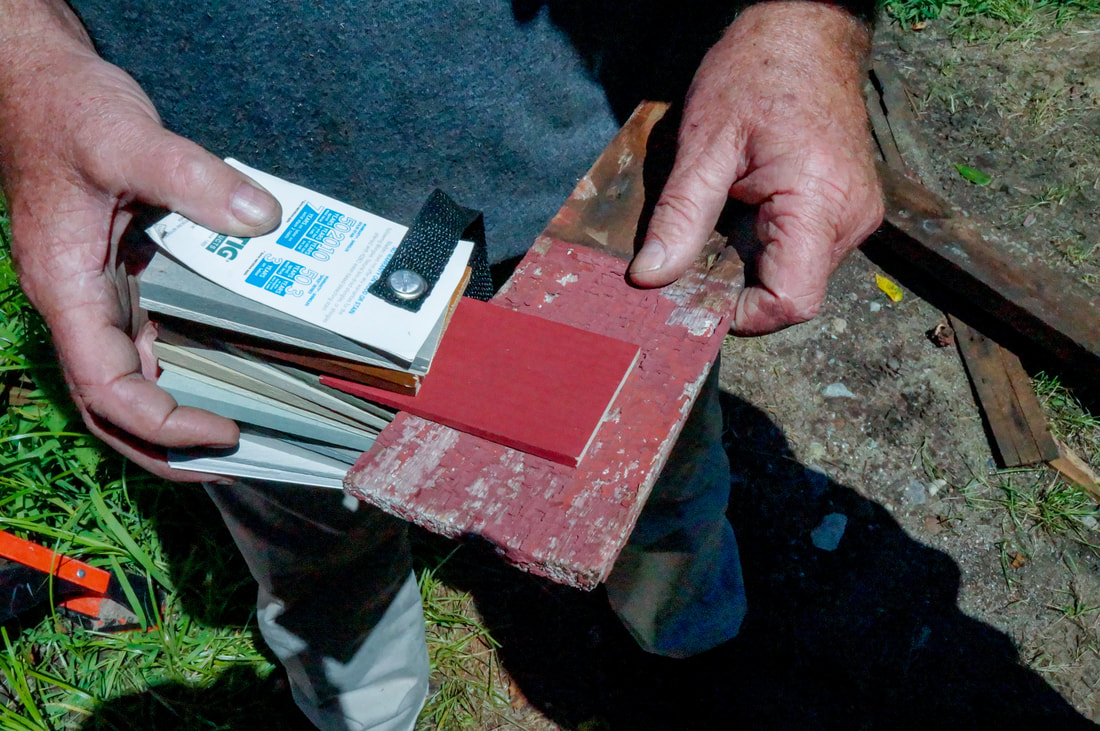
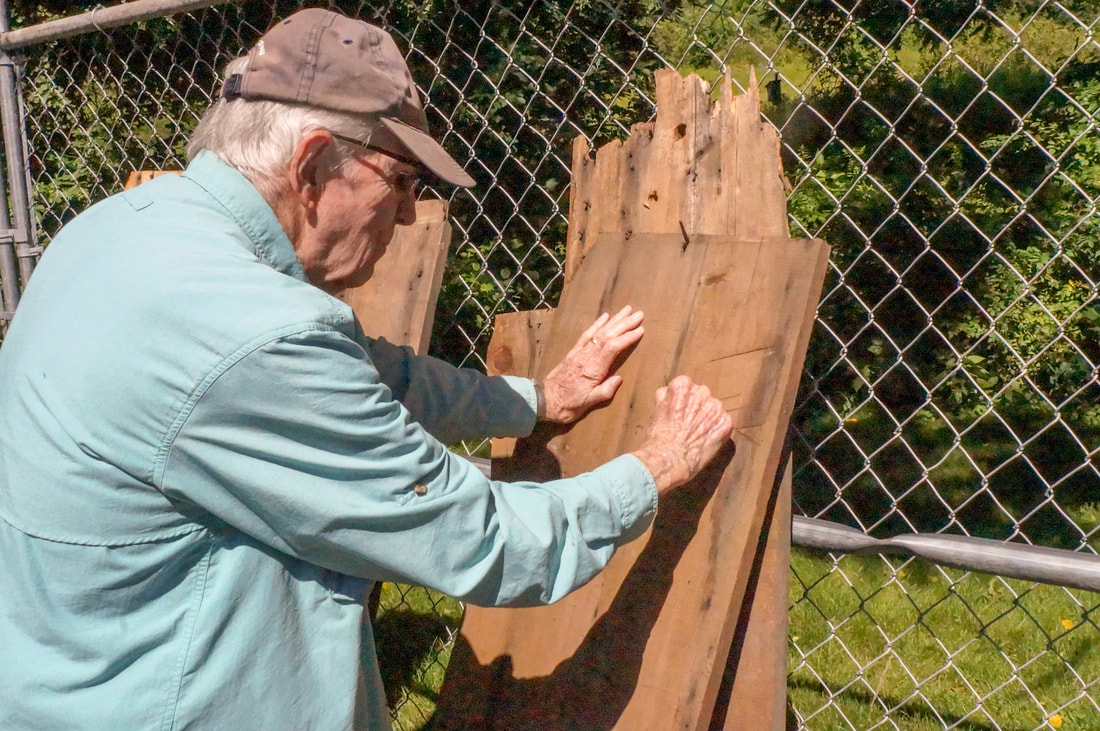
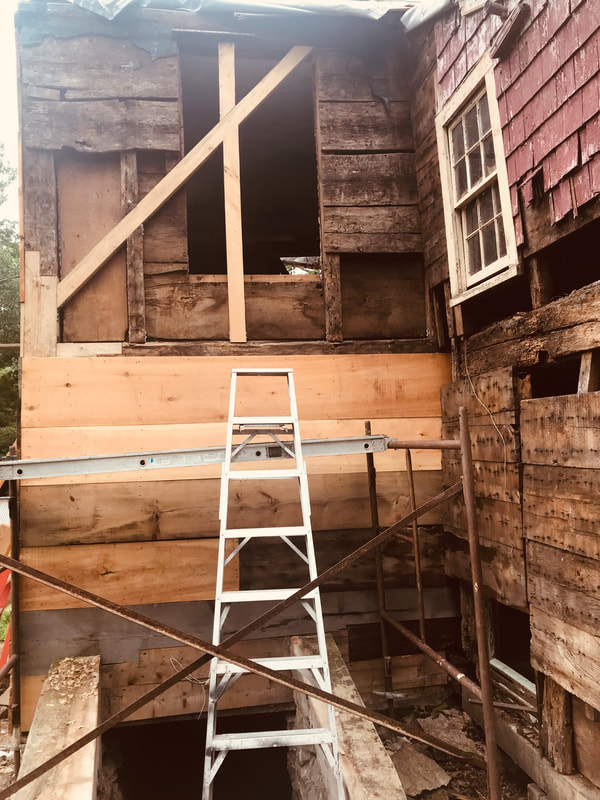
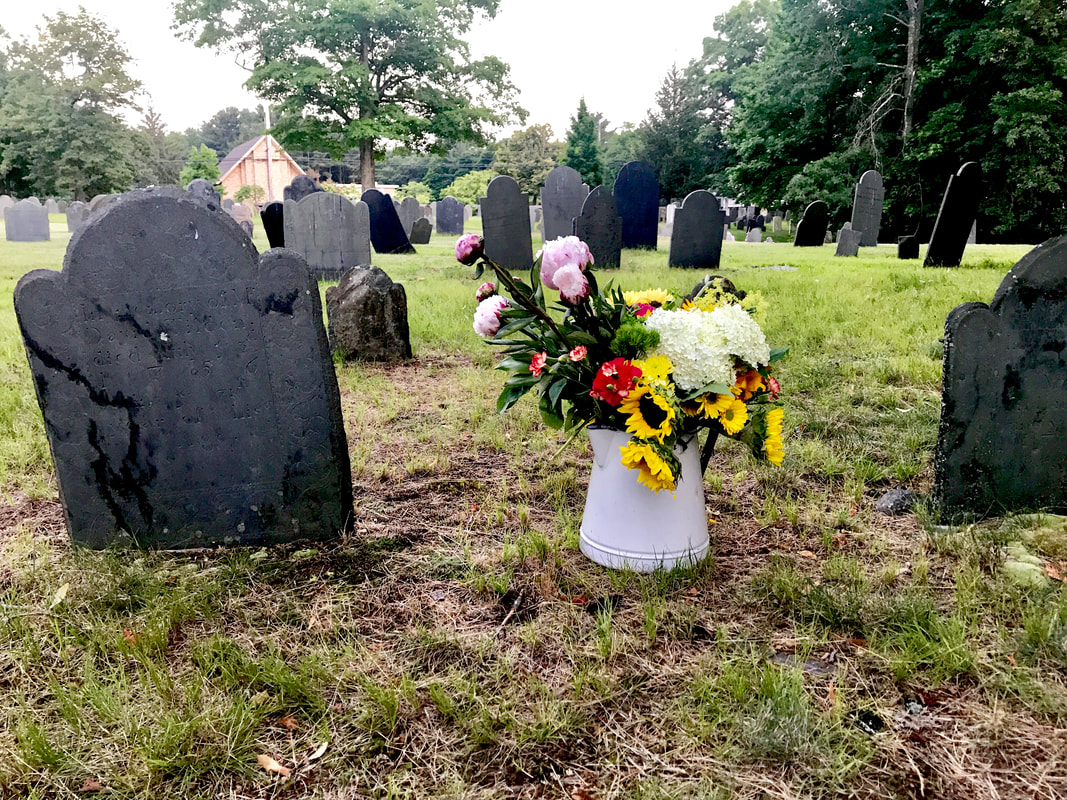
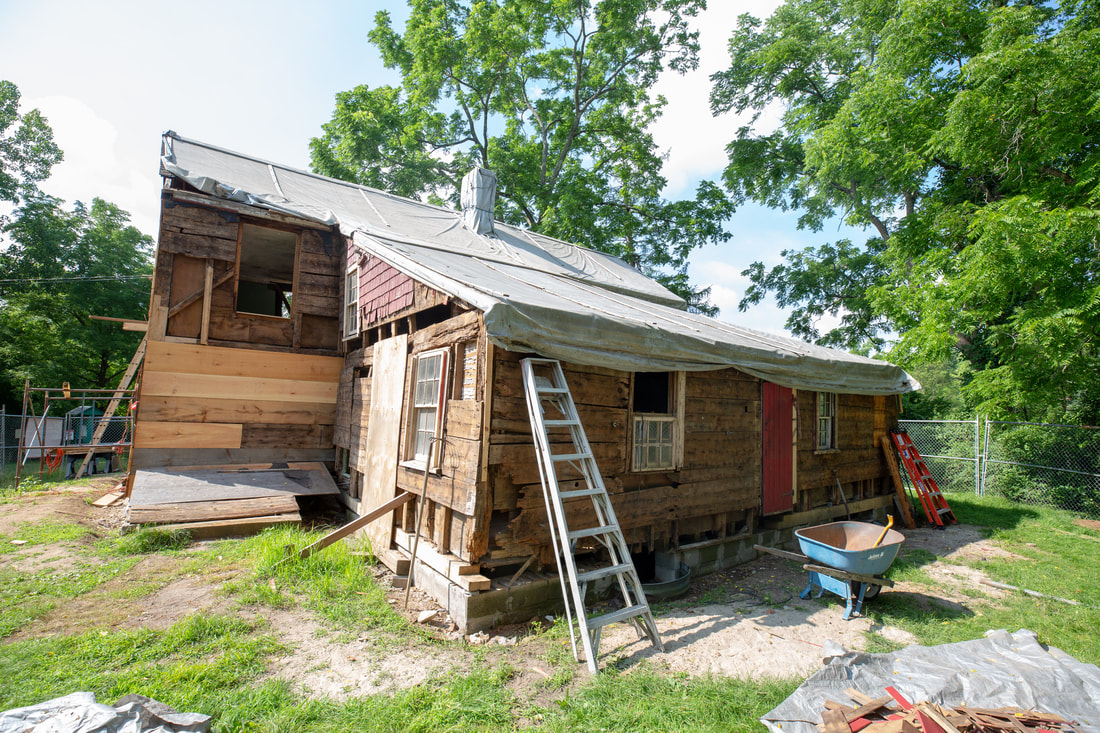
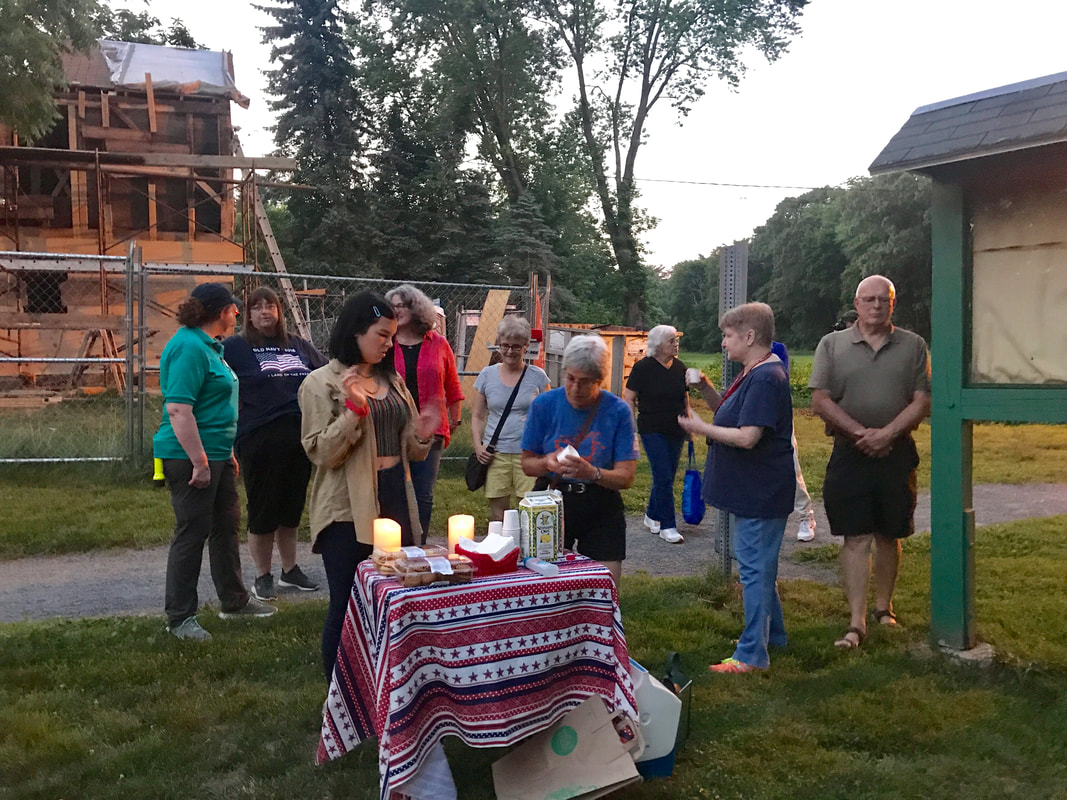
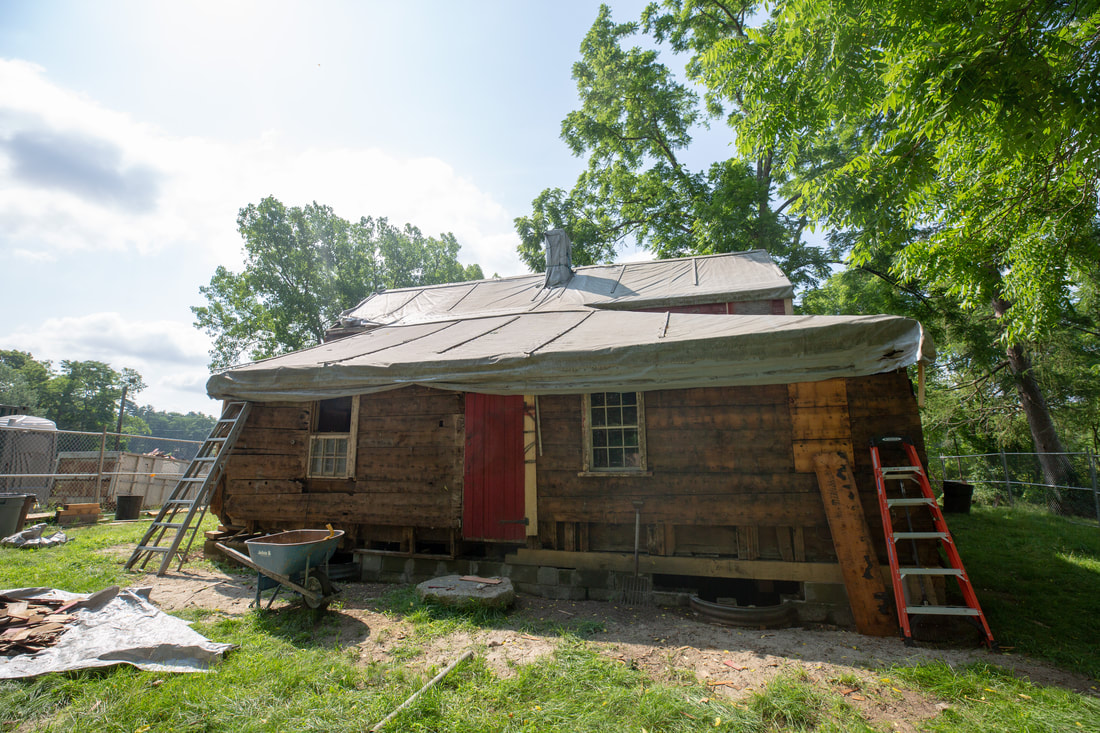
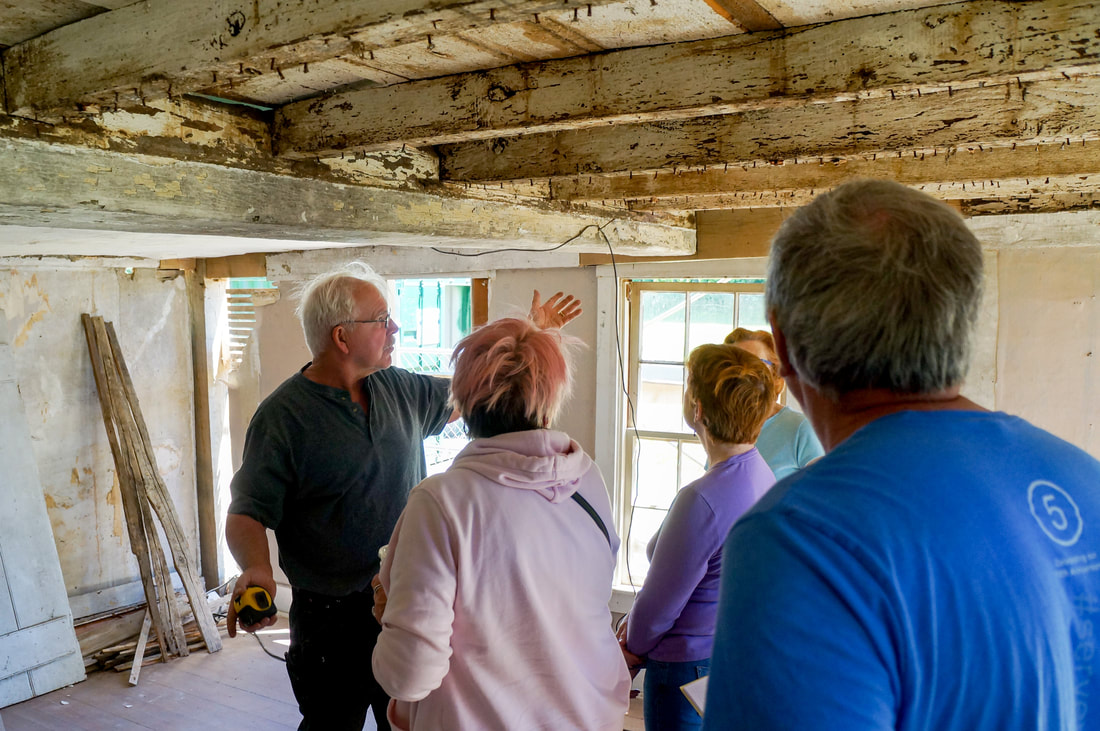
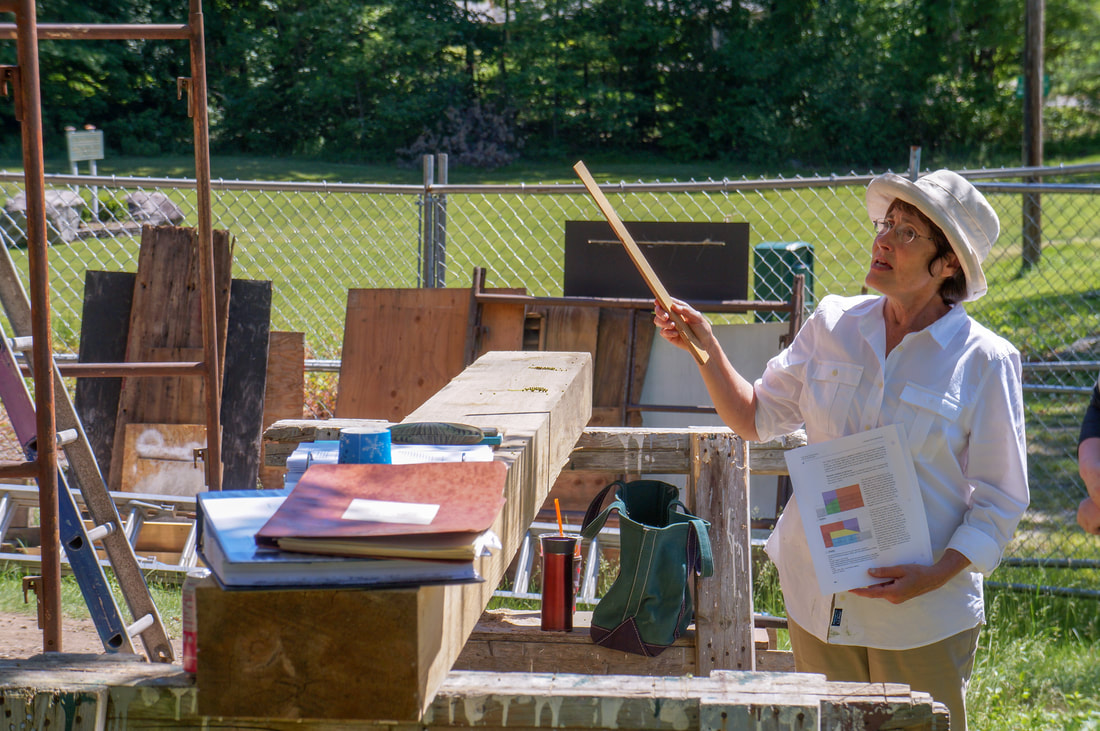
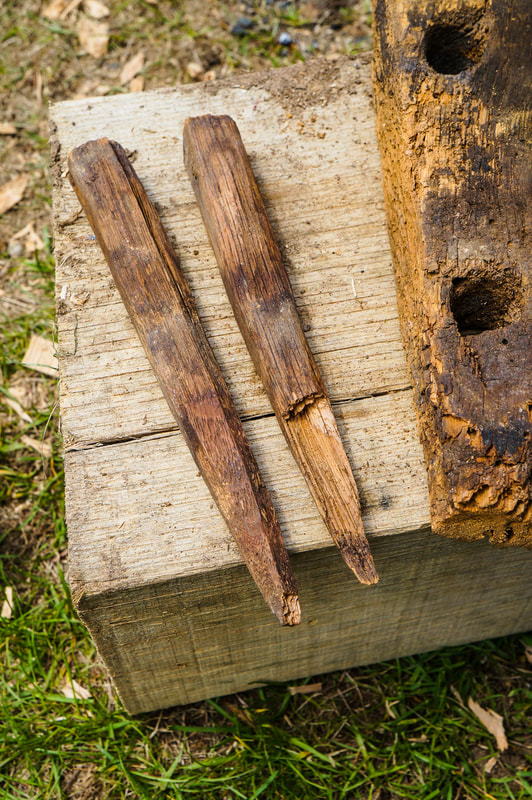

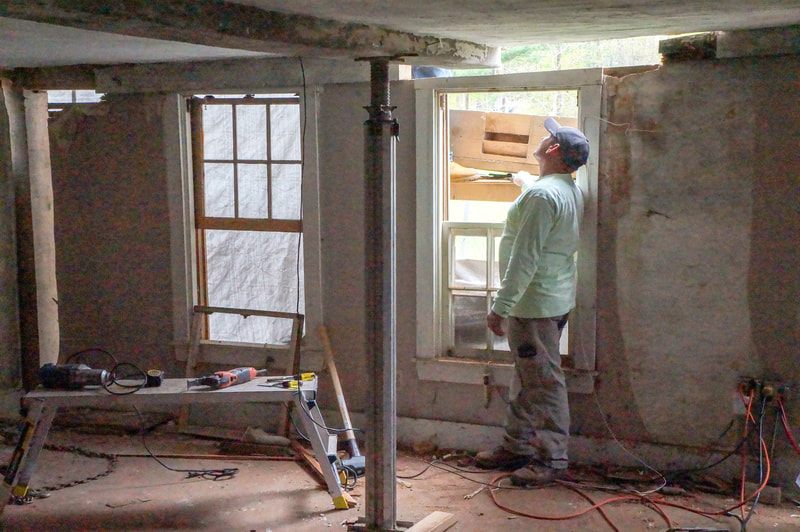
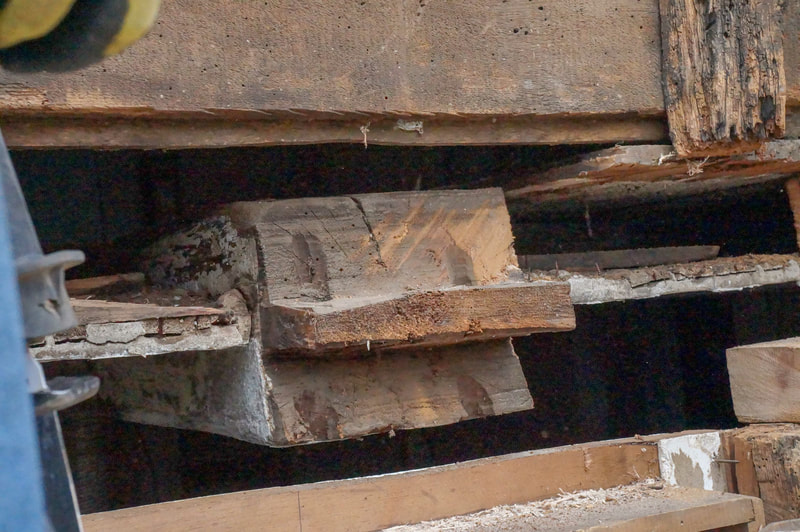
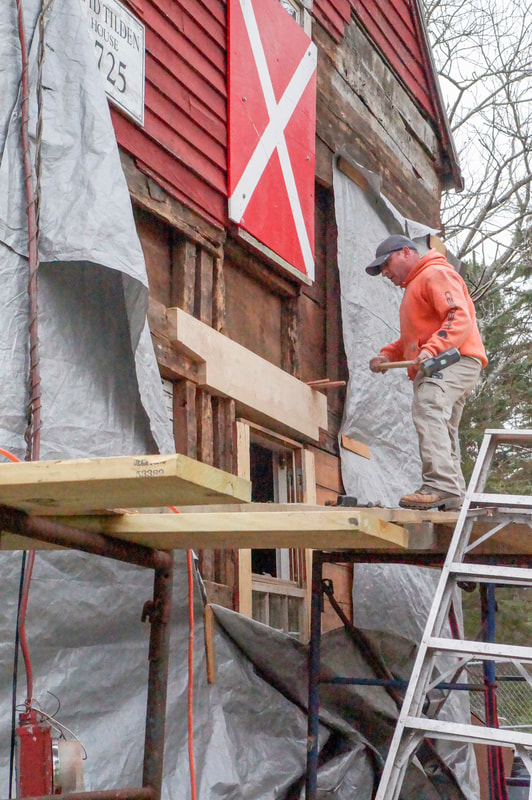
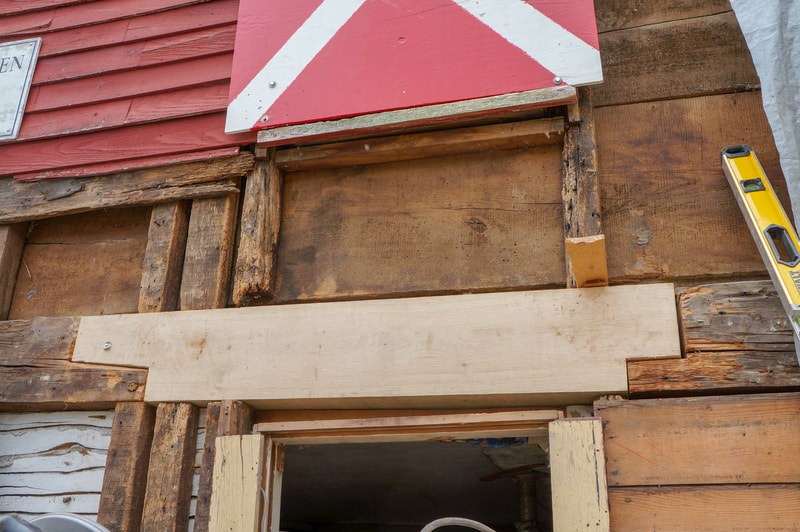
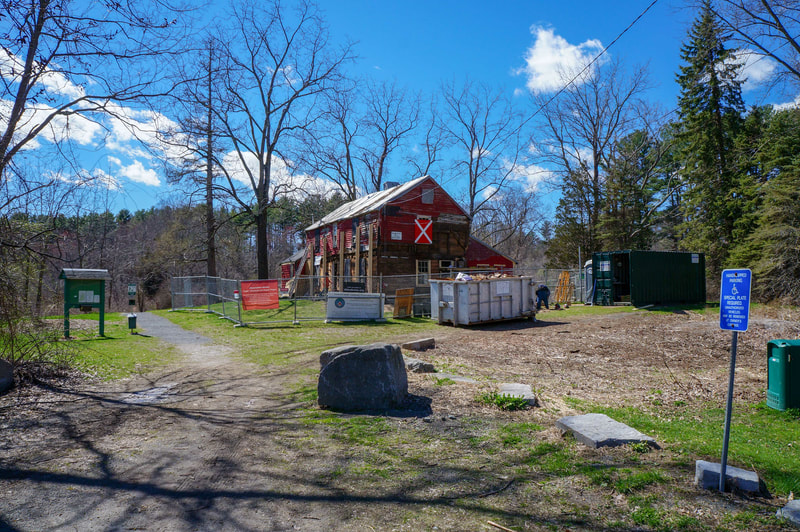
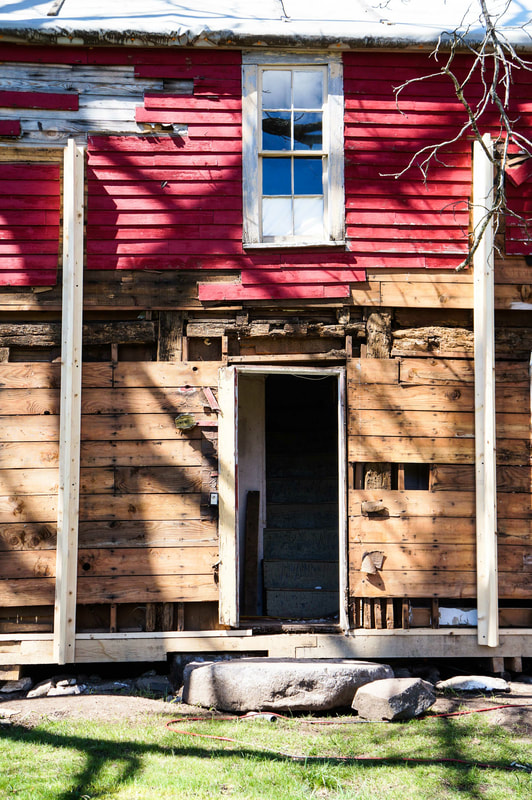
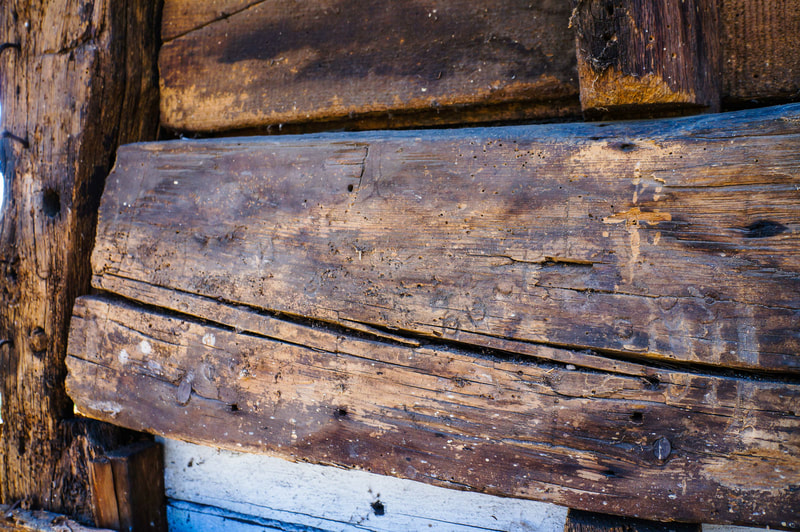
 RSS Feed
RSS Feed